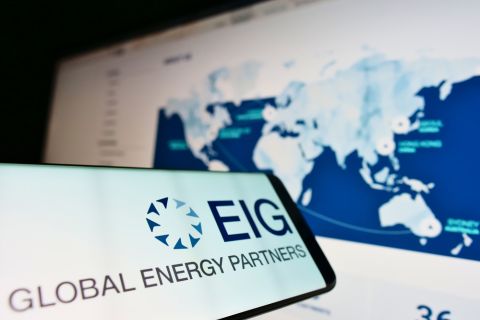CGG Receives Perdido Subsalt Seismic Imaging Contract From Pemex
Geoscience company CGG received a major contract from Pemex to deliver an orthogonal wide-azimuth (WAZ) integrated solution for subsalt seismic imaging in the Gulf of Mexico’s deepwater Perdido area, CGG said on Oct. 25.
The new WAZ survey, covering about 10,000 sq km (3,861 sq miles), will overlay the existing WAZ seismic data acquired by CGG in 2010. This combined orthogonal WAZ dataset will provide Pemex with enhanced subsalt imaging results because the targets beneath the salt canopy will be better illuminated.
CGG said the survey will begin in early 2017, and the data will be processed in the company’s Villahermosa, Mexico, and Houston subsurface imaging centers.
TGS Expands Northwest African Atlantic Margin Seismic Survey
On Oct. 28, TGS said it expanded its Northwestern African Atlantic Margin (NWAAM) multiclient library in the MSGBC Basin offshore West Africa. TGS plans to acquire more than 11,500 km (7,146 miles) of 2-D seismic data and magnetic and gravity data in the Republic of Guinea, Guinea Bissau and the AGC joint exploration zone between Guinea Bissau and Senegal.
TGS will undertake this alongside PGS and in cooperation with GeoPartners. Acquisition of this first phase of the NWAAM expansion will commence in November 2016.
The NWAAM2017 seismic survey was designed to infill, extend and complement the TGS NWAAM2012 2-D survey, which helped with recent commercial discoveries in the MSGBC Basin.
The survey will be carried out with the seismic vessel BGP Dong Fang Kan Tan 1.
A 12-km (7-mile) deep-tow streamer will enable the recording of high-quality broadband 2-D seismic data, which will image the pre-rift, syn-rift and post-rift plays evident in this basin.
TGS CEO Kristian Johansen said the company already has more than 28,000 km (17,398 miles) of 2-D data and more than 18,000 sq km (6,950 sq miles) of 3-D data.
Norway, Russia Will Exchange Seismic Data In Search For Oil, Gas
Russia and Norway have agreed to exchange seismic data from the two countries’ Arctic maritime border in a bid to help the search for oil and gas, the Norwegian Petroleum Directorate (NPD) said in a statement on Oct. 26.
“This agreement is extremely important. It allows us to achieve a better understanding of the regional geological conditions on both sides of the demarcation line and, not least, of geological structures that span across the line,” said Stig-Morten Knutsen, NPD assistant director of exploration.
The oil and gas industry uses seabed seismic data to help determine where to drill for petroleum reservoirs.
The agreement between the NPD and Russian petroleum authorities (Rosnedra) entails that both countries will exchange about the same volume of data from the Barents Sea.
Norway awarded 10 new licenses in May in the so-called 23rd licensing round for new exploration areas, which for the first time is granting access to an offshore border zone with Russia in the Arctic Barents Sea.
—Staff & Reuters Report
Recommended Reading
Ithaca Energy to Buy Eni's UK Assets in $938MM North Sea Deal
2024-04-23 - Eni, one of Italy's biggest energy companies, will transfer its U.K. business in exchange for 38.5% of Ithaca's share capital, while the existing Ithaca Energy shareholders will own the remaining 61.5% of the combined group.
EIG’s MidOcean Closes Purchase of 20% Stake in Peru LNG
2024-04-23 - MidOcean Energy’s deal for SK Earthon’s Peru LNG follows a March deal to purchase Tokyo Gas’ LNG interests in Australia.
TotalEnergies to Acquire Remaining 50% of SapuraOMV
2024-04-22 - TotalEnergies is acquiring the remaining 50% interest of upstream gas operator SapuraOMV, bringing the French company's tab to more than $1.4 billion.
TotalEnergies Cements Oman Partnership with Marsa LNG Project
2024-04-22 - Marsa LNG is expected to start production by first quarter 2028 with TotalEnergies holding 80% interest in the project and Oman National Oil Co. holding 20%.
Is Double Eagle IV the Most Coveted PE-backed Permian E&P Left?
2024-04-22 - Double Eagle IV is quietly adding leases and drilling new oil wells in core parts of the Midland Basin. After a historic run of corporate consolidation, is it the most attractive private equity-backed E&P still standing in the Permian Basin?




